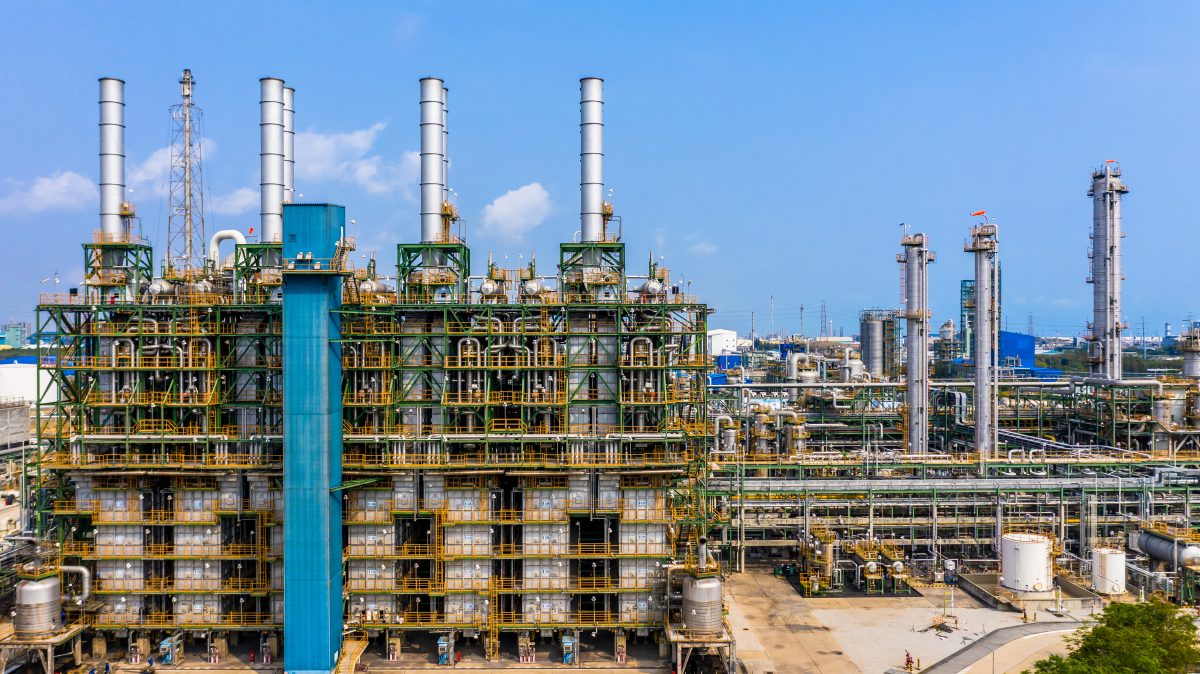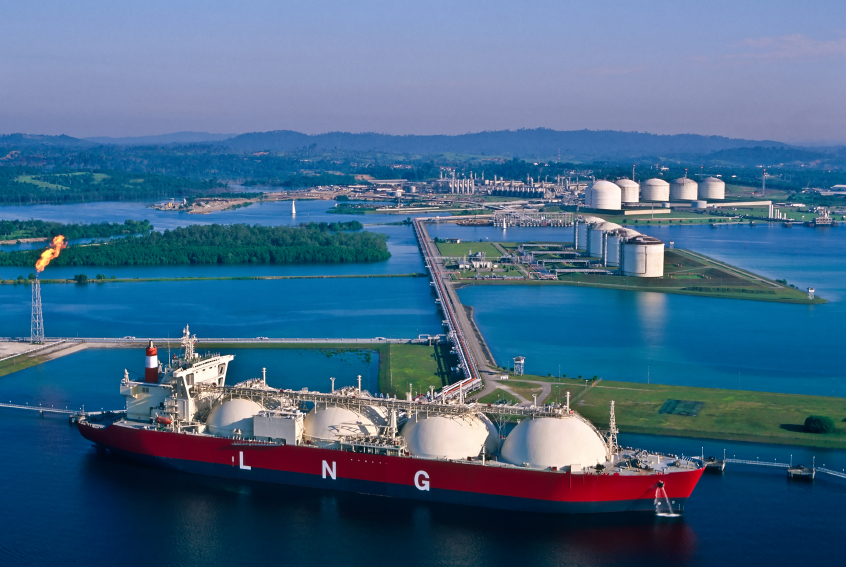By Charles Kennedy, Apr 03, 2024
Category: Uncategorized
U.S. Refinery Activity Increases, Crude Oil Imports Decline in Latest EIA Report
The U.S. Energy Information Administration’s (EIA) latest Weekly Petroleum Status Report, released on February 28, 2024, shows positive signs for domestic refinery activity, but also highlights a decrease in crude oil imports.x
Key Findings:
Refinery Activity Up:
U.S. crude oil refinery inputs averaged 14.7 million barrels per day (mbpd) during the week ending February 23, 2024, an increase of 100,000 bpd from the previous week. Refineries operated at 81.5% of their capacity.
Crude Oil Imports Down:
Crude oil imports averaged 6.4 million bpd last week, a decrease of 269,000 bpd from the prior week. However, over the past four weeks, crude oil imports averaged 6.6 million bpd, slightly exceeding the same period last year.
Gasoline Production Up:
Production of both gasoline and distillate fuel increased last week, averaging 9.4 million bpd and 4.3 million bpd, respectively.
Inventories:
U.S. commercial crude oil inventories increased by 4.2 million barrels, but remain slightly below the five-year average for this time of year. Conversely, gasoline and distillate fuel inventories decreased and are currently below the five-year average.
Prices:
The price of West Texas Intermediate crude oil decreased by $2.05 per barrel compared to the previous week, while the national average retail price for gasoline and diesel fuel both declined slightly.
Overall, the EIA report indicates increased domestic refining activity alongside a decrease in crude oil imports. While gasoline and distillate fuel production rose, their inventories remain below the five-year average.
By: Barchart / Hedder , March 8, 2024
Computer Vision, Edge Computing Can Shape the Future of Oil and Gas
Edge computing is propelling computer vision into a new era, catalyzing the development of smart devices, intelligent systems, and immersive experiences.
Within information technology (IT) today, a significant trend revolves around the empowerment of artificial intelligence (AI) and the Internet of Things (IoT) through edge computing, expediting the time to value for digital transformation initiatives. Santhosh Rao, a senior research director at Gartner, notes that, presently, approximately 10% of enterprise-generated data is created and processed outside a traditional centralized data center or cloud. Looking ahead, Gartner anticipates this figure will surge to 75% by 2025.
Expanding on this, edge computing is propelling computer vision into a new era, catalyzing the development of smart devices, intelligent systems, and immersive experiences. The inherent benefits of edge computing, including expedited processing, increased security, and real-time insights, have positioned it as a pivotal tool across various computer vision applications.
The past 12 months has seen a noticeable uptick in interest in critical applications for computer vision on the edge, signaling a growing demand for fault-tolerant-based solutions. The capabilities of cameras to perceive such things as thermal and infrared imaging — beyond the human eye’s capabilities — render them indispensable for identifying inconsistencies or vulnerabilities in diverse industrial processes, ultimately contributing to enhanced work flow efficiency and operational excellence.
This article delves into the leading applications of computer vision on edge devices within the oil and gas industry, presenting distinctive opportunities for seamlessly integrating edge computing and computer vision.
Enhancing Health, Safety, and Environment (HSE)
In the oil and gas sector in particular, the synergy of edge computing and computer vision is proving to be critical in addressing HSE concerns. Vision systems now can discern issues traditionally assessed by human personnel, including perimeter security concerns. This extends to the monitoring of flares and processes to detect hazardous conditions such as leaks or alterations in flare chemical composition through temperature and color analysis. This plays a critical role in fire prevention and detection and facilitates emergency responses to catastrophic events such as explosions. Flare monitoring aids operators in achieving smokeless flaring, thereby improving their carbon footprint and minimizing overall environmental impact.
Furthermore, real-time cameras can be installed to monitor usage of personal protective equipment, ensuring the safety of workers in hazardous environments. These AI-enhanced systems can even identify injuries and promptly alert response teams and authorities, ultimately enhancing overall safety standards in the industry.
Operations and Reliability
Vision systems also can benefit the oil and gas sector by improving operational and reliability metrics. For example, a terminal can use vision systems to watch traffic flow and quickly identify if certain pumps, vehicles, lanes, or operators are creating bottlenecks or slowing down when compared with how they operated in the past. Engineers often struggle to identify why some assets perform better than others when all the equipment seems to be equal. Vision systems can help identify and quantify the human element by observing the behaviors of top preforming operators and allow those best practices to be taught to the rest of the team.
The best reliability engineers know that correlating data is key to identifying root causes and failure modes. Although many reliability departments include thermal and visible light imaging, these are snapshots in time and could fail to identify key events that have affected equipment. Including vision systems can bolster reliability by identifying these key events, correlating them with other reliability data, and quantifying the effect on reliability metrics. Vision systems offer the incredible ability to identify things you never knew affected your operations before.
Operationalizing Computer-Vision-Based Insights With Edge Computing
Today, there are three options to help incorporate these innovative and highly dynamic systems into operations to begin gaining valuable and actionable operational intelligence.
Smart Vision Systems With Integrated AI Models. This involves using intelligent camera systems and the vendor’s accompanying software to train the camera to detect a specific target scenario. While out-of-the-box functionality is highly beneficial for fast deployment for individual sites or targets, several challenges must be considered. Some of those detracting factors include high cost and vendor lock-in. The most notable issue with this approach, though, is the limited scalability of the trained model, meaning the model must be trained on one camera before it is manually moved to every other camera for them to learn from one another.
Standard Cameras With Cloud-Based AI Model. This is where raw video is streamed to the cloud, then the models are trained in the cloud to detect predetermined targets. This comes with data quality and cost challenges and cloud egress fees and can be difficult to integrate meaningfully into work flows. The upside, however, is that it provides good scalability, many options for open vendor tools for improved serviceability, and a wide variety of targets to train for to help improve the flexibility of the technology.
Standard Cameras With Edge AI Model. This presents an opportunity to have the best of both worlds. Among the key advantages is having a variety of vendors to choose from (i.e., no vendor or software lock-in). You own your data and infrastructure, with a wide variety of targets to train for, very scalable models, quick deployment for individual sites and targets, and local integration into work flows. Conversely, the biggest challenge is getting multiple departments to collaborate around a single edge computing platform (e.g., operations, IT, and procurement).
Perhaps most important when comparing vision system architecture models, however, is the integration of insights into work flows and actions. Owner/operators within the oil and gas industry can only achieve demonstrable gains in their digital transformation initiatives when they can react to what the vision system identifies. Using edge computing platforms, owner/operators can quickly and efficiently integrate into alarm systems, supervisory control and data acquisition systems, and enterprise resource planning systems; trigger work orders; and connect data historians among other critical applications.
This is the key to deriving value from a computer vision system. If you cannot quickly act on what your vision system detected, then there is little value in having a vision system at all.
Conclusion
In the oil and gas industry, transformative shifts are underway, propelled by computer vision systems. The adoption of edge-native deployments, however, is imperative to fully harness the potential of this technology. The speed, security, and real-time insights facilitated by edge computing position it as an indispensable tool for applications in this sector.
Crucially, vision systems alone do not instigate change; rather, they provide the insights necessary to drive informed action. Effecting true change requires the seamless integration of these insights into real-time work flows at the local level. As technology advances, ongoing innovations in edge computing and computer vision promise a future characterized by safer, more efficient, and smarter systems and devices. This trajectory is set to transform daily lives both now and in the years to come.
By Rudy De Anda / jpt.spe, January 25, 2024
Port of Rotterdam’s Throughput Drops Amidst Global Challenges
The Port of Rotterdam is feeling the impacts of global geopolitical and economic upheavals, posting a decline in total cargo throughput and recording a near-flat change in revenues last year. For Europe’s busiest port, Russia’s war in Ukraine and the resultant sanctions, changing energy needs dynamics in Europe, weakening economic growth and faltering global trade have conspired to create a slump in performance.
In 2023, Rotterdam recorded a 6.1 percent decline in total cargo throughput, moving 438.8 million tons compared to 467.4 million tons in 2022.
The fall was mainly seen in coal throughput, containers and other dry bulk. The port still had a “stable year financially” after revenue posted a marginal increase of 1.9 percent to $909 million.
For Rotterdam, the clouds of uncertainty that started gathering in 2022 continued last year. After demand for coal rose sharply in Europe due to concerns about energy security and large increases in gas prices in 2022, last year saw more stability and a transition to LNG.
Coal throughput at the port fell by 20.3 percent to 23.1 million tons, mainly because of low demand for coal for power production. Decline in coal had the biggest impact on dry bulk throughput, which plunged by 11.8% to 70.6 million tons compared to 80 million tons in 2022.
Slowing economic growth in Europe also hit the segment, causing a striking decrease of 49.4 percent in other dry bulk.
In liquid bulk, overall throughput was 3.4 percent lower last year, down to 205.6 million tons compared to 212.7 million the previous year. Crude oil fell by 1.4 percent with the discontinuation of ship-to-ship transshipment.
On the flipside, increase in LNG imports as Europe moved to replace pipeline imports of Russian natural gas saw throughput increase by 3.7 percent to 11.9 million tons from 11.4 million tons the previous year. The port also saw more LNG bunkering activity.
Container throughput was noticeably down. Owing to lower consumption, lower production in Europe and the discontinuation of volumes to and from Russia due to sanctions, the number of TEU handled fell by seven percent to 13.4 million, down from 14.4 million the previous year. Roll-on/roll-off traffic fell by five percent, with the weak UK economy and lagging consumption being the main causes.
“2023 saw ongoing geopolitical unrest, low economic growth due to higher interest rates and faltering global trade, all of which had a logical effect on throughput in the port of Rotterdam,” said Boudewijn Siemons, Port of Rotterdam Authority CEO.
Despite facing a turbulent year, which the authority expects to continue this year in what is already shaping up as unpredictable, Rotterdam is advancing investments to transition the port to a sustainable facility. Last year the Port Authority invested a total of $319.5 million on key projects. Key investments are also lined up for implementation this year, some of which are critical in Rotterdam’s energy transition ambitions
BY THE MARITIME EXECUTIVE / February 21, 2024
ARA oil product stocks rise further (Week 4 – 2024)
Independently-held oil product stocks at the Amsterdam-Rotterdam-Antwerp (ARA) trading hub rose significantly, in the week to 22 February, according to consultancy Insights Global, as overall demand in the region remains muted.
Naphtha stocks rose on the week, after an increase the previous week. Increased blending interest for gasoline supported stock draws. But petrochemical demand was seen to be waning in the week compared with earlier in the month, which is likely to have increased storage at the hub.
Market participants have continued to indicate increased blending demand for gasoline in anticipation of higher exports to the US in the coming months, but gasoline stocks at the ARA hub declined in the week. There was some increase in export volumes out of the region. Volumes leaving for west Africa up from the previous week, indicating an increase. Departures to the US were also up on the week, according to Kpler data.
Gasoil stocks fell, pressured by longer delivery periods from the east as well as lower demand from Germany. Independently-held jet fuel stocks rose in the week, with cargoes coming into the ARA from the UAE as well as India.
By Atishya Nayak
Refiners Pledge to Invest $4.5 Bil. into Eco-Friendly Fuels
The country’s major refiners have pledged to invest a combined 6 trillion won ($4.5 billion) until 2030 in developing eco-friendly fuels to counter the environmental regulations that are increasing worldwide and improve a new growth engine for local oil companies and consumers, according to the Ministry of Trade, Industry and Energy, Wednesday.
With the pledge, the companies and the ministry have agreed to bolster the country’s refinery industry and stabilize the local consumer market amid rising uncertainties and geopolitical risks to the global energy market.
SK Energy CEO and President Oh Jong-hoon, S-Oil President of Corporate Strategy and Services Ryu Yul, HD Hyundai Oilbank CEO Chu Young-min and GS Caltex Executive Vice President Kim Jung-su on the same day met Second Vice Minister of Trade, Industry and Energy Choi Nam-ho in Seoul. The meeting was arranged by the ministry to discuss with the country’s big-four refiners how to improve national competitiveness in the global oil market.
The vice minister and the private firm leaders agreed to secure a stable supply of petroleum and maintain the price within a consistent range. Choi referred to petroleum as an “essential consumer product that takes up a significant portion of the public economy,” and said that its price must be stabilized to prevent public concerns.
Choi said that stabilizing the price requires the companies’ commitment to further investment and a spirit of mutual growth.
“A recent revision to the country’s Petroleum and Alternative Fuel Business Act has ushered in a legal, fundamental ground to further spread the use of eco-friendly fuels,” Choi said in the meeting. “And we want you companies to respond to the legal change by making bolder investments.”
Choi said the ministry is open to sharing problems the companies might experience during any part of the process, from importing petroleum to exporting their products.
“We expect the companies to pioneer new markets and come up with new products to keep their export momentum going,” Choi said.
The company representatives said their businesses need government support for their imminent grievances like securing fuel, tax exemption incentives, technological advancement and regulatory sandbox.
CITGO Petroleum Corporation Prices $1.10 Billion Senior Secured Notes
CITGO Petroleum Corporation (“CITGO”) has priced $1.10 billion aggregate principal amount of 8.375% senior secured notes due 2029 (the “notes”) in a private offering exempt from the registration requirements of the Securities Act of 1933, as amended (the “Securities Act”). The closing of the offering is expected to occur on September 20, 2023, subject to customary closing conditions.
CITGO intends to use the total net proceeds from the sale of the notes for general corporate purposes and to pay all fees and expenses in connection with the sale of the notes.
In addition, CITGO intends to pay a dividend to CITGO Holding, Inc. (“CITGO Holding”) of approximately $1.120 billion to fund the pending redemption of the $1.286 billion aggregate principal amount of CITGO Holding’s 9.25% senior secured notes due 2024 (the “CITGO Holding notes”). The redemption of the CITGO Holding notes is contingent upon the consummation of the notes offering.
This press release does not constitute an offer to sell or the solicitation of an offer to buy the notes, nor will there be any sale of the notes in any state or other jurisdiction in which such offer, solicitation or sale would be unlawful. This press release does not constitute a notice of redemption with respect to the CITGO Holding notes.
The offer and sale of the notes have not been and will not be registered under the Securities Act, or the securities laws of any other jurisdiction, and may not be offered or sold in the United States absent registration or an applicable exemption from registration requirements.
The notes are being offered only to persons reasonably believed to be qualified institutional buyers under Rule 144A under the Securities Act and to non-U.S. persons in offshore transactions in compliance with Regulation S under the Securities Act.
By PR News, September 29, 2023
An Oil Boom Is Underway In Ghana
Several African countries have welcomed investment in oil and gas in recent years, as parts of the continent undergo industrialization and investors look to develop new reserves. Africa provides companies with the potential for low-cost, low-carbon oil and gas in largely unexplored areas.
But governments across the region hope to be more closely involved in operations, ensuring that they get a significant proportion of the revenues to bolster their economies. One such country is Ghana, which expects an oil boom over the next decade and beyond.
At the COP27 climate summit last year, several African state leaders presented the case for the development of the region’s oil and gas resources. Following a year of shortages and surging energy prices, several countries with oil and gas potential urged investors to develop new, low-carbon operations to meet the global demand without having to rely on aging, carbon-heavy operations. And many energy firms are now viewing regions such as Africa and the Caribbean as vital to their aims to decarbonize.
In Ghana, there are 17 oil and gas projects in the 2023 to 2027 pipeline. This includes 3 upstream projects, nine projects in the midstream sector, and five new downstream projects.
Ghana is now one of Africa’s fastest-growing hydrocarbon producers. There are several oil operations already underway in the West African country, with Phase 1 of the Pecan Conventional Oilfield as well as the Jubilee South East field and Ntomme Far West Development.
Pecan is expected to have a capacity of 82,500 bpd when production begins in 2025, with phase 1 costing $1.5 billion. It is operated by exploration and production company Aker Energy Ghana Ltd. (50%); petroleum corporation Lukoil (38%); Ghana’s state-owned Ghana National Petroleum Corporation (GNPC) (10%); and transport company Bulk Ship & Trade (2%). Meanwhile, the Jubilee South East field should begin producing 37,000 bpd by the end of the year. The field is operated by Tullow Oil (38.98%), deepwater exploration and production company Kosmos Energy (38.61%); the GNPC (19.69%); and South Africa’s National Oil Company (NOC) PetroSA (2.72%). Ghana hopes to discover further oil and gas deposits in the Ntomme Far West Development, with a pre-feasibility analysis having taken place and exploration drilling planned for later this year.
Meanwhile, the country’s midstream sector will expand alongside exploration and production operations. Ghana plans to develop the Tema Floating Liquefied Natural Gas (FLNG) Plant, the Tema VI Liquids Storage Terminal, the Dixcove Oil Storage Facility, the Wa Oil Storage Facility and the Tema-Akosombo II and Tema Pipelines between 2023 to 2027.
In March this year, the African Energy Chamber stated that Ghana hopes to double its oil output by the end of the year, from 180,000 bpd to 420,000 bpd. The CEO of the Petroleum Commission of Ghana, Egbert Faibille Jr., stated “Ghana has positioned itself to attract investments in the energy sector.
We present one of the best investment opportunities in the sub-region. Following the Jubilee discovery in 2007, 30 additional discoveries have been made and are pending appraisal and development. Ghana guarantees attractive fiscal terms. These terms have proven over the years to provide a favorable investment framework.” Faibille added, “We have several blocks open for direct negotiation and three available for farm-in opportunities.
We have some fields that are in pre-development, so if we are able to get contractors, we should see a surge in production by 2030.”
Ghana’s oil operations are already well underway, with the country expecting to open a new $1.98 billion oil refinery in Tema this month.
The Sentuo Group’s facility is expected to produce 5 million metric tonnes of petroleum products including liquified petroleum gas (LPG), jet fuel, gasoline, diesel, and fuel oil. Ghana’s Minister of Trade and Industry confirmed last month that Sentuo is in discussions with the government to acquire 500,000 barrels of crude for refining.
By 2025, Sentuo plans to expand the facility to refine 4.26 million tonnes of petroleum products.
Meanwhile, Britain’s Tullow Oil announced the start of operations at the Jubilee South East (JSE) project in July. The company said that the first well started producing, with another two producers and a water injector expected to come online later in the year. Tullow hopes the field will produce over 100,000 bpd once operational.
The firm’s CEO stated, “Successful start-up at Jubilee South East is a significant milestone for Tullow and for Ghana.” He added, “We are well positioned for future growth with production ramping up in the second half of 2023 that will generate significant free cash flow.
This marks the start of material deleveraging as we continue our transition into a low-debt business with the financial flexibility to pursue value accretive opportunities.”
Ghana is viewed as Africa’s rising star, thanks to its stable political system, growing economy, and the rapid development of its oil and gas sector.
There are several projects in the pipeline, with oil production expected to increase significantly by 2030. Ghana could provide oil producers with the opportunity to develop the low-cost, low-carbon oil needed to meet the high global demand en route to an eventual global energy transition.
OilPrice.com by Felicity Bradstock, August 23, 2023
Nigeria Looks To Attract Oil & Gas Investment At International Roadshow
Nigeria plans to hold an international roadshow to attract investments in its upstream sector, the petroleum regulator of OPEC’s biggest African oil producer said in a speech shared with Reuters.
The Nigerian Upstream Petroleum Regulatory Commission (NUPRC) plans to organize in the coming weeks an international roadshow to pitch upstream investments in the country, which looks to boost its oil production and significantly raise its natural gas output.
NUPRC plans to organize in the coming weeks its first Nigerian Upstream International Investment and Financial Roadshow (NUIIFR) to allow upstream players to network and discuss financial structures to enable investment, representatives of the regulator said in a speech at a conference of the Society of Petroleum Engineers in Lagos earlier this week.
“Whereas the global imperatives for energy transition is clear and justified, the need for Africa’s energy security, economic development and prosperity cannot be overemphasised,” the Nigerian regulator said.
Nigeria aims to significantly increase its oil production to up to 1.7 million barrels per day (bpd) by November 2023, hoping to win a higher quota in the OPEC+ agreement, Gabriel Tanimu Aduda, Permanent Secretary at Nigeria’s Ministry of Petroleum Resources, told Energy Intelligence last month.
Nigeria has consistently failed to produce to its quota in the OPEC+ agreement. The combination of pipeline vandalism and oil theft with a lack of investment in capacity has made Nigeria the biggest laggard in crude oil production in the OPEC+ alliance. Oil theft and pipeline vandalism have long plagued Nigeria’s upstream oil and gas industry, driving majors out of the country and often resulting in force majeure at the key crude oil export terminals.
Nigeria’s quota was 1.742 million bpd earlier this year, but due to its underproduction of more than 400,000 bpd, the output cap for Nigeria was lowered to 1.38 million bpd at the OPEC+ meeting in early June.
Oilprice.com by Charles Kennedy, August 8, 2023
One Sector To Watch Oil As Oil Prices Rally
After remaining range-bound for much of the second quarter, oil prices have mounted a significant rally, with analysts saying oil markets are finally waking up to the fact that fundamentals have tightened significantly. After remaining in surplus for months, many experts have predicted that demand will begin to surpass supply thus improving oil prices and margins for oil refiners.
For instance, StanChart’s demand model projects a supply deficit of 2.81 million barrels per day in August; 2.43 mb/d in September and more than 2mb/d in November and December.
The analysts have also projected that global inventories will fall by 310 mb by end-2023 and another 94 mb in the first quarter of 2024 thus pushing oil prices higher.
Although U.S. oil refinery margins have halved since the middle of 2022, they remain at historically high levels and are likely to remain elevated through the summer of 2023 thanks to high operating rates and low fuel stocks.
Gross margins for refining three barrels of crude to produce two barrels of gasoline and one barrel of distillate fuel oil have retreated to $33 per barrel from a record $60 at the start of June 2022. Still, margins are in the 95th percentile for all trading days since 2001, underpinning refinery profitability and encouraging high levels of capacity utilization.
Revenues and profits for refining companies have declined from last year’s historical highs but remain at healthy levels. Here are three refining stocks to keep an eye on.
Marathon Petroleum Corp
Market Cap: $54.3B
Dividend Yield: 2.6%
YTD Returns: 22.5%
Marathon Petroleum Corporation (NYSE:MPC) is an integrated downstream energy company and the largest petroleum refinery operator in the United States. The company’s latest earnings revealed strong refinery demand despite general economic malaise. Marathon’s Q2 2023 revenue of $36.82B (-32.1% Y/Y) beats the Wall Street consensus by $2.94B while GAAP EPS of $5.32 beat by $0.74.
Net income fell to $2.23B, or $5.32/share, from $5.87B, or $10.95/share from a year ago while adjusted EBITDA was cut in half to $4.53B from $9.06B a year ago. Refining & Marketing segment adjusted EBITDA fell to $11.88/bbl from $27.79/bbl for the prior-year quarter while segment margin was $22.10/bbl compared with $37.54/bbl in last year’s corresponding quarter.
Crude capacity utilization clocked in at 93% with total throughput of 2.9M bbl/day.
Marathon Ol continues returning copious amounts of cash to shareholders: The company revealed that it returned ~$3.4B of capital through $3.1B of stock buybacks and $316M of dividends in the second quarter. The company’s diversification into renewables gives Marathon Oil better protection from fluctuating oil prices and refining margins.
PBF Energy Inc.
Market Cap: $6.0B
Dividend Yield: 1.3%
YTD Returns: 26.2%
PBF Energy Inc. (NYSE:PBF) engages in refining and supplying petroleum products. PBF is one of the youngest oil refiners in the United States having been created in 2008. The company released its quarterly earnings report on Thursday, with revenue of $9.16B (-34.9% Y/Y) beating by $230M while Q2 Non-GAAP EPS of $2.29 beat by $0.05.
In-line with the industry trend, Q2 net income fell to $1.02B, or $7.88/share, from $1.2B, or $9.65/share, in the year-earlier quarter. production fell slightly to 945,700 bbl/day from 958,800 bbl/day a year earlier. Refinery throughput fell to 935,800 bbl/day from 958,800 bbl/day a year ago and expects full-year production to average 915K-975K bbl/day.
And, just like its bigger peer, PBF Energy is diversifying into renewables: the company announced it had begun operations at its St. Bernard renewable fuel joint venture in New Orleans, and managed to sell the first products from the facility in July. The 50-50 joint venture with Eni S.p.A.(NYSE:E) has a processing capacity of ~1.1M tons/year of raw materials and will produce ~7.3M bbl/year of renewable diesel.
Phillips 66
Market Cap: $48.5B
Dividend Yield: 3.9%
YTD Returns:9.0%
Phillips 66 (NYSE:PSX) is one of the oldest refineries in the United States. The company operates as an energy manufacturing and logistics company, with its refining segment one of its largest. Phillips 66 reported Q2 Non-GAAP EPS of $3.87, beating the consensus by $0.31.
The company does not report revenue figures but said it generated $1.0 billion of operating cash flow ($2.0 billion excluding working capital). Realized refining margins fell to $15.32/bbl from $28.62/bbl a year ago. Phillips 66 revealed that it plans to run its refineries in the mid-90% range of their combined crude oil throughput capacity of 1.9M bbl/day in Q3, close to second quarter’s figure at 93%.
Phillips 66 announced that its Rodeo refinery in California will be fully converted to renewable diesel production by the first quarter of 2024 when it is scheduled to begin commercial operation.
Oilprice.com by Alex Kimani, August 8, 2023






